Toxic history soda (6 photos)
 Bashny.Net
Bashny.Net
Reputation soda slightly marred in recent years. Loved by many a drink last appeared in the headlines of the investigation of a potential carcinogen that lurks on the label under the name of "caramel coloring" and used in many recipes soft drink. This is just one of the recent history.

Perhaps you have heard of New York trying to ban large servings of soda, the seizure of machines with soft drinks from many US public schools and the desire of lawmakers to establish additional tax on soda. All this is aimed at cushioning the impact of unhealthy drinks, such as increasing childhood obesity.
Faced with all these negative reviews in the press, it is difficult to believe that the "bad" is actually a soft drink was invented as a means to care for the sick and was characterized by a large number of favorable characteristics. In fact, soda was invented in Europe, where the healing properties of natural mineral waters touted for hundreds of years. Bathing or drinking water from these natural spa, we thought to cure a large number of diseases. Tristan Donovan, author of "Pop: soda or changed the world", says the disease, which coped mineral water accounted for, and I quote, "ridiculously big list" includes everything from gallstones to scurvy.
A significant breakthrough in popularity of soda in the United States associated with Sillimenym Benjamin, who worked as a teacher of chemistry at Yale College, and wanted to increase his small salary, doing something altruistic for mankind. Sillimen believed that soda can be used in medicine, so he started a business in New Haven, Connecticut, selling bottled sparkling water. Since Sillimen not had much success selling the drink at a local pharmacy, he decided to expand his business by designing the machine saturation of water with carbon dioxide, and found sponsors to open two drinking gallery in New York.
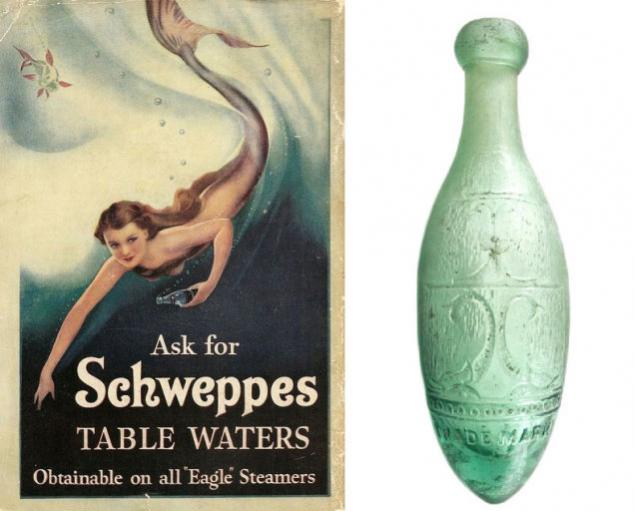
In 1809 Sillimen started selling soda in cafes and Tontine Hotel City institutions who attended an elite clientele. A tontine is a restaurant, by the way, it was in the building of the New York Stock Exchange. In addition, the first vending machines for soda were designed mainly to create an atmosphere of chic. They have been decorated with marble and soda sold in decorative copper bottles. However Sillimen continued to focus on the healing properties of soda, while its competitors have recognized that social aspects of drinking were potentially more attractive.
People who have had a better business sense than the Sillimena, opened their galleries drinking style spa. People came there to drink soda, but could also enjoy reading free books and conversations with other intelligent people who also came to drink soda water. They realized that they could make a real business out of this, is considered Sillimen soda more in terms of medicine. While waiters in tontine recognize that customers prefer other drinks soda, sold it still slow, and ultimately Sillimen was forced to leave the business. Even as the company failed Sillimena popularity soared soda and vending machines will soon appear in other cities.
Because soda is still regarded as a medicinal drink, the first store to sell soda were located in pharmacies or near them. In part, they have become so connected due to the fact that pharmacists already have a set of skills to aerate the water and create a syrup. They were people who knew what components need to be added to the water to ensure the effect of improving health. For example, soda "sarsaparilla" was known as a cure for syphilis. And the addition of phosphoric acid could help with hypertension and other problems. For example, the same ginger beer originally valued for its medicinal qualities.

According to Darcy O'Neil, author of «Fix the Pumps», pharmacists originally used sweet taste for soda flavors to mask the taste of bitter medicines such as quinine and iron, as the majority of drugs at the time sold in liquid form. In addition, a large number of pharmaceutical elixirs and potions were already mixed with alcohol, which made even the nasty medicinal flavor appealing. Many elixirs and potions contain the same amount of alcohol as a glass of whiskey. Therefore, like soda and drink lovers. They could get a drink at a price much lower than in the bar, because alcohol-based "medicine" is not taxed.
In addition to alcohol soda 19th century, also contained drugs with strong side effects, including components, are now prohibited. Before the Law on Food and Drug Administration from 1906, legal restrictions on what could be added to drinks from the vending machines of soda water, simply did not exist. Many customers come to the machines early in the morning to start the day with a "healthy" beverage. Physical and mental stimulation could provide caffeine or other addictive substances.
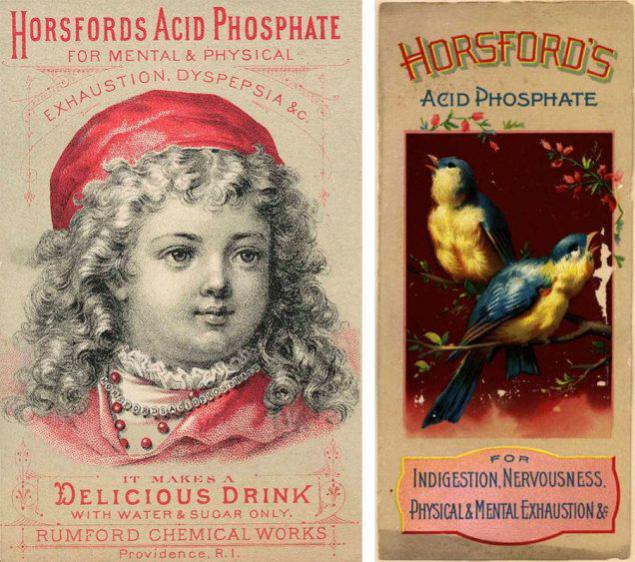
Pharmacists mixed soda more potent drugs, which include strychnine, marijuana, morphine, opium, heroin, and the miracle of a new compound called cocaine, which began to use in 1855. Cocaine was a wonder drug when it was invented. He was noted as a miraculous medicine that does no harm. Components such as cocaine, cola nuts and phosphoric acid used to move you beyond reality and "heal" you.
Recipes that keep the story almost always contain 0.01 grams of cocaine. This is approximately one-tenth of the track coke. It's hard to be sure, but I do not think it gave people a strong buzz. Certainly there was an effect, but most likely it was a little stronger than coffee. While the dosage was small, of course, they have formed a habit, and vending machines for soda received good profit from such loyal customers.
During the mid-19th century, vending machines with soda water spread across the United States and medicinal drink has become a favorite for Americans to compete with the best cocktails in the world. Throwers soda or soda sellers, as they later called (because of the specific jerking movement of the hand), we had to be as well qualified as the bartenders; in fact, many bartenders started to work in vending sparkling water, as soon as the industry began to develop rapidly.
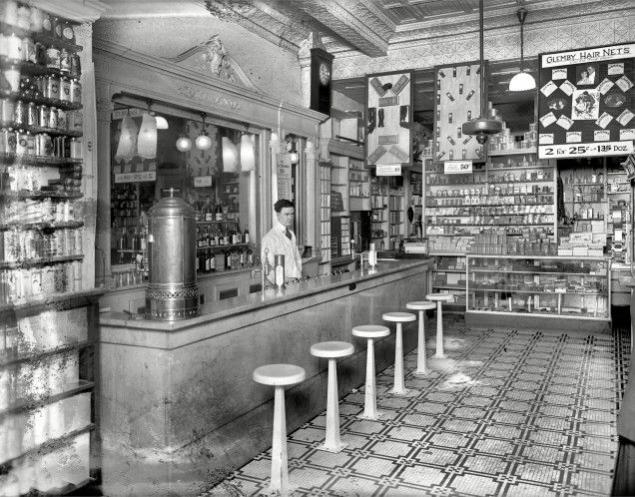
At the beginning of the XX century, many Americans began to realize the danger of unregulated use of drugs. In 1902, the Los Angeles Times published an article entitled "Thirst cocaine: Villains of the vending machine soda water", which focused on the questionable ingredients in such popular drinks like Coca-Cola. However, judging from the small amount of cocaine in recipes, it is doubtful that all were dependent on soda or their number was insignificant.
In fact, Coca-Cola was designed in the search for an antidote to the common dependence on morphine, which followed the civil war. It is a war veteran and pharmacist John Pemberton thought through the original line-up Coca-Cola, experimenting with painkillers without opiates to soothe their own battle wounds. The first advertisement appeared in the pages of the company on patents for medicines in 1886 and explained that Coca-Cola is viewed as medicinal drink, "has remarkable properties of the coca plant and cola nuts known to all."
Cocaine is an extract of the coca leaf, and African kola nut known for its high caffeine content. Law on food and medicines in 1906 demanded to remove all drugs out of food, most of the cocaine from Coca-Cola has been withdrawn, but only in 1929 was coined by a method that will eliminate all traces of the drug, ie, Coca-Cola, even though it was illegal, even in '23 contained cocaine.
Although Coca-Cola has been a leader in the vending machines of soda water by the end of 1890, the long-term success of the company depended on the premises of the beverage in the bottle. While Coca-Cola Company does not like the idea of bottled drinks. They thought that the bottle inherently dirty container, and the opening of plants for bottling and distribution network was very expensive exercise, so they were happy simply shipping its beverage machines. But in 1899, two entrepreneurs, Joseph and Benjamin Thomas Whitehead convinced Coca-Cola co-founder Asa Griggs Candler give them exclusive rights to the bottling of its products. Coca-Cola bottles soon became the biggest success.
Instead of having to build their own facilities for the storage of bottles, Whitehead and Thomas came up with a clever solution - Sale privilege regional bottlers across the country. They divided the United States into smaller segments and sold a license to spill The Coca-Cola bottles of local businessmen. This meant that the company has not had to invest in a huge expansion. Their biggest competitors at the time, Moxie, refused to do so, in the end, were left far behind. Furthermore, Moxie taste was more pungent than Coca-Cola, which automatically pushed consumers when it came domination sweet drinks.
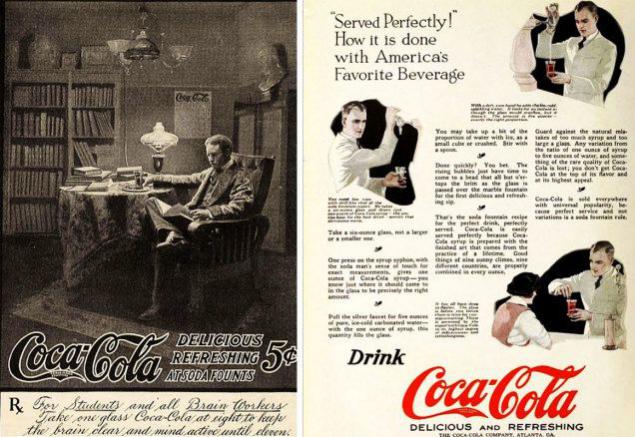
By the end of the 1920 Coca-Coly in bottles have been sold more than machines. And over the next decade, the abolition of Prohibition and the growth of the automobile culture in America accelerated, the decline of vending machines of soda water in pharmacies. When, after World War II, began to open a roadside cafe, they lured customers from vending machines of soda water. Americans spend a lot of time in their cars and moved to the suburbs, so most drug stores on the main streets fell into disrepair. Vending machines with soda and demanded a large amount of resources, while actively developing retail sales without requiring large investments.
Our thirst for carbonated drinks has evaporated along with vending machines with soda instead, consumers took advantage of the convenience of bottled drinks because they really convenient. After the war, many Americans have purchased their first home refrigerators, thereby continuing to support the market bottled soda. Being forced to remove the narcotic components soda manufacturers increasingly rely on sugar to their drinks on to plant new customers. And as for the production of soda giant surging, companies revised recipes to reduce overall costs, referring to cheaper components, such as caramel colorant, and corn syrup.
Coca-Cola, Dr. Pepper, Pepsi and Moxie began to produce a fully non-alcoholic beverages, which were supposed to have some healing properties. Nobody worried about sugar at the end of the 19th century. It was an era when people would be plump; the woman in the pictures portrayed complete. Of course, no one worried about the weight of the way we do it today.
Although carbonated soft drink remains the favorite drink of many of us, by the way, it consumes about 60,000,000,000 liters, statistics show a decline in sales of soda in the United States and in other developed countries, but its popularity has been steadily increasing in the developing countries.
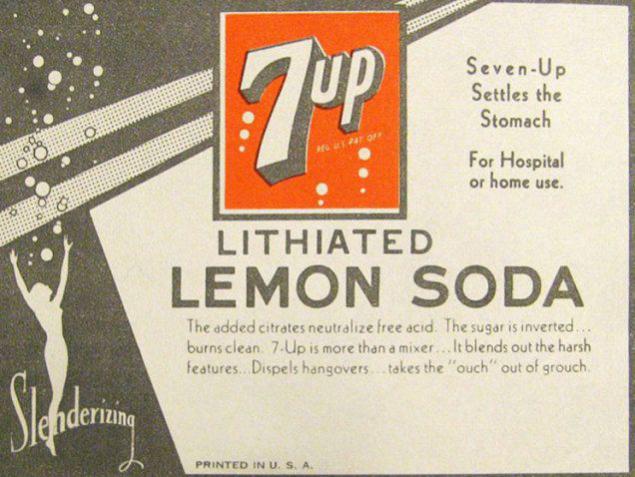
Sugar or any sweeteners are extremely important for the taste of these drinks. Reputation artificial sweeteners was marred their relationship with carcinogens. Thus, soda faced with the fact that people are suspicious of artificial sweeteners, and, let's be honest, they do not have that taste like sugar. The industrial approach to the production of soda count on finding a natural sweetener, which have the same taste as sugar, with a complete lack of calories. If they succeed, it would change everything.
Regardless of any new "healthy" recipes that come up with these companies, as history shows, they may ultimately prove to be terrible for you.

Perhaps you have heard of New York trying to ban large servings of soda, the seizure of machines with soft drinks from many US public schools and the desire of lawmakers to establish additional tax on soda. All this is aimed at cushioning the impact of unhealthy drinks, such as increasing childhood obesity.
Faced with all these negative reviews in the press, it is difficult to believe that the "bad" is actually a soft drink was invented as a means to care for the sick and was characterized by a large number of favorable characteristics. In fact, soda was invented in Europe, where the healing properties of natural mineral waters touted for hundreds of years. Bathing or drinking water from these natural spa, we thought to cure a large number of diseases. Tristan Donovan, author of "Pop: soda or changed the world", says the disease, which coped mineral water accounted for, and I quote, "ridiculously big list" includes everything from gallstones to scurvy.
A significant breakthrough in popularity of soda in the United States associated with Sillimenym Benjamin, who worked as a teacher of chemistry at Yale College, and wanted to increase his small salary, doing something altruistic for mankind. Sillimen believed that soda can be used in medicine, so he started a business in New Haven, Connecticut, selling bottled sparkling water. Since Sillimen not had much success selling the drink at a local pharmacy, he decided to expand his business by designing the machine saturation of water with carbon dioxide, and found sponsors to open two drinking gallery in New York.

In 1809 Sillimen started selling soda in cafes and Tontine Hotel City institutions who attended an elite clientele. A tontine is a restaurant, by the way, it was in the building of the New York Stock Exchange. In addition, the first vending machines for soda were designed mainly to create an atmosphere of chic. They have been decorated with marble and soda sold in decorative copper bottles. However Sillimen continued to focus on the healing properties of soda, while its competitors have recognized that social aspects of drinking were potentially more attractive.
People who have had a better business sense than the Sillimena, opened their galleries drinking style spa. People came there to drink soda, but could also enjoy reading free books and conversations with other intelligent people who also came to drink soda water. They realized that they could make a real business out of this, is considered Sillimen soda more in terms of medicine. While waiters in tontine recognize that customers prefer other drinks soda, sold it still slow, and ultimately Sillimen was forced to leave the business. Even as the company failed Sillimena popularity soared soda and vending machines will soon appear in other cities.
Because soda is still regarded as a medicinal drink, the first store to sell soda were located in pharmacies or near them. In part, they have become so connected due to the fact that pharmacists already have a set of skills to aerate the water and create a syrup. They were people who knew what components need to be added to the water to ensure the effect of improving health. For example, soda "sarsaparilla" was known as a cure for syphilis. And the addition of phosphoric acid could help with hypertension and other problems. For example, the same ginger beer originally valued for its medicinal qualities.

According to Darcy O'Neil, author of «Fix the Pumps», pharmacists originally used sweet taste for soda flavors to mask the taste of bitter medicines such as quinine and iron, as the majority of drugs at the time sold in liquid form. In addition, a large number of pharmaceutical elixirs and potions were already mixed with alcohol, which made even the nasty medicinal flavor appealing. Many elixirs and potions contain the same amount of alcohol as a glass of whiskey. Therefore, like soda and drink lovers. They could get a drink at a price much lower than in the bar, because alcohol-based "medicine" is not taxed.
In addition to alcohol soda 19th century, also contained drugs with strong side effects, including components, are now prohibited. Before the Law on Food and Drug Administration from 1906, legal restrictions on what could be added to drinks from the vending machines of soda water, simply did not exist. Many customers come to the machines early in the morning to start the day with a "healthy" beverage. Physical and mental stimulation could provide caffeine or other addictive substances.

Pharmacists mixed soda more potent drugs, which include strychnine, marijuana, morphine, opium, heroin, and the miracle of a new compound called cocaine, which began to use in 1855. Cocaine was a wonder drug when it was invented. He was noted as a miraculous medicine that does no harm. Components such as cocaine, cola nuts and phosphoric acid used to move you beyond reality and "heal" you.
Recipes that keep the story almost always contain 0.01 grams of cocaine. This is approximately one-tenth of the track coke. It's hard to be sure, but I do not think it gave people a strong buzz. Certainly there was an effect, but most likely it was a little stronger than coffee. While the dosage was small, of course, they have formed a habit, and vending machines for soda received good profit from such loyal customers.
During the mid-19th century, vending machines with soda water spread across the United States and medicinal drink has become a favorite for Americans to compete with the best cocktails in the world. Throwers soda or soda sellers, as they later called (because of the specific jerking movement of the hand), we had to be as well qualified as the bartenders; in fact, many bartenders started to work in vending sparkling water, as soon as the industry began to develop rapidly.

At the beginning of the XX century, many Americans began to realize the danger of unregulated use of drugs. In 1902, the Los Angeles Times published an article entitled "Thirst cocaine: Villains of the vending machine soda water", which focused on the questionable ingredients in such popular drinks like Coca-Cola. However, judging from the small amount of cocaine in recipes, it is doubtful that all were dependent on soda or their number was insignificant.
In fact, Coca-Cola was designed in the search for an antidote to the common dependence on morphine, which followed the civil war. It is a war veteran and pharmacist John Pemberton thought through the original line-up Coca-Cola, experimenting with painkillers without opiates to soothe their own battle wounds. The first advertisement appeared in the pages of the company on patents for medicines in 1886 and explained that Coca-Cola is viewed as medicinal drink, "has remarkable properties of the coca plant and cola nuts known to all."
Cocaine is an extract of the coca leaf, and African kola nut known for its high caffeine content. Law on food and medicines in 1906 demanded to remove all drugs out of food, most of the cocaine from Coca-Cola has been withdrawn, but only in 1929 was coined by a method that will eliminate all traces of the drug, ie, Coca-Cola, even though it was illegal, even in '23 contained cocaine.
Although Coca-Cola has been a leader in the vending machines of soda water by the end of 1890, the long-term success of the company depended on the premises of the beverage in the bottle. While Coca-Cola Company does not like the idea of bottled drinks. They thought that the bottle inherently dirty container, and the opening of plants for bottling and distribution network was very expensive exercise, so they were happy simply shipping its beverage machines. But in 1899, two entrepreneurs, Joseph and Benjamin Thomas Whitehead convinced Coca-Cola co-founder Asa Griggs Candler give them exclusive rights to the bottling of its products. Coca-Cola bottles soon became the biggest success.
Instead of having to build their own facilities for the storage of bottles, Whitehead and Thomas came up with a clever solution - Sale privilege regional bottlers across the country. They divided the United States into smaller segments and sold a license to spill The Coca-Cola bottles of local businessmen. This meant that the company has not had to invest in a huge expansion. Their biggest competitors at the time, Moxie, refused to do so, in the end, were left far behind. Furthermore, Moxie taste was more pungent than Coca-Cola, which automatically pushed consumers when it came domination sweet drinks.

By the end of the 1920 Coca-Coly in bottles have been sold more than machines. And over the next decade, the abolition of Prohibition and the growth of the automobile culture in America accelerated, the decline of vending machines of soda water in pharmacies. When, after World War II, began to open a roadside cafe, they lured customers from vending machines of soda water. Americans spend a lot of time in their cars and moved to the suburbs, so most drug stores on the main streets fell into disrepair. Vending machines with soda and demanded a large amount of resources, while actively developing retail sales without requiring large investments.
Our thirst for carbonated drinks has evaporated along with vending machines with soda instead, consumers took advantage of the convenience of bottled drinks because they really convenient. After the war, many Americans have purchased their first home refrigerators, thereby continuing to support the market bottled soda. Being forced to remove the narcotic components soda manufacturers increasingly rely on sugar to their drinks on to plant new customers. And as for the production of soda giant surging, companies revised recipes to reduce overall costs, referring to cheaper components, such as caramel colorant, and corn syrup.
Coca-Cola, Dr. Pepper, Pepsi and Moxie began to produce a fully non-alcoholic beverages, which were supposed to have some healing properties. Nobody worried about sugar at the end of the 19th century. It was an era when people would be plump; the woman in the pictures portrayed complete. Of course, no one worried about the weight of the way we do it today.
Although carbonated soft drink remains the favorite drink of many of us, by the way, it consumes about 60,000,000,000 liters, statistics show a decline in sales of soda in the United States and in other developed countries, but its popularity has been steadily increasing in the developing countries.

Sugar or any sweeteners are extremely important for the taste of these drinks. Reputation artificial sweeteners was marred their relationship with carcinogens. Thus, soda faced with the fact that people are suspicious of artificial sweeteners, and, let's be honest, they do not have that taste like sugar. The industrial approach to the production of soda count on finding a natural sweetener, which have the same taste as sugar, with a complete lack of calories. If they succeed, it would change everything.
Regardless of any new "healthy" recipes that come up with these companies, as history shows, they may ultimately prove to be terrible for you.
Tags
See also
100 interesting facts from the history of the USSR and Russia
Life in the USSR (12 photos)
The Queen of Sheba (55 photos)
As the bats were to bomb Japan (12 pictures)
Seven human records (16 photos)
7 incredible stories of survival of babies (7 photos)
For that shot the designer Taubina (16 photos)
1001 rule
Ten of the most horrible hole in the ground (9 photos + video)
Amazing underwater opening (10 photos)
















